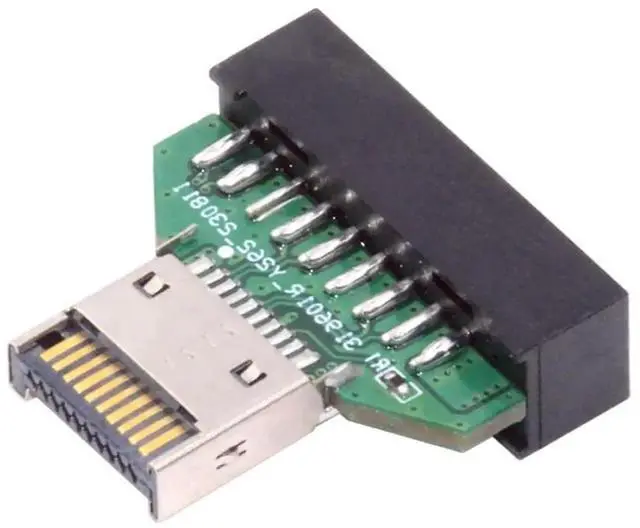
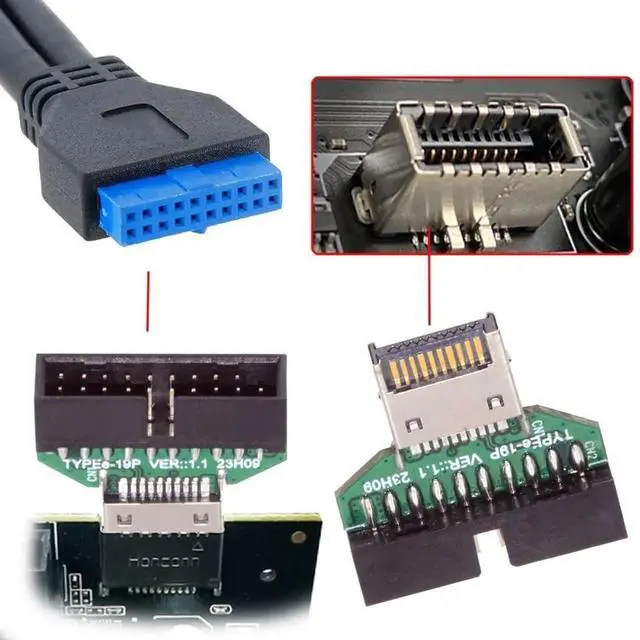
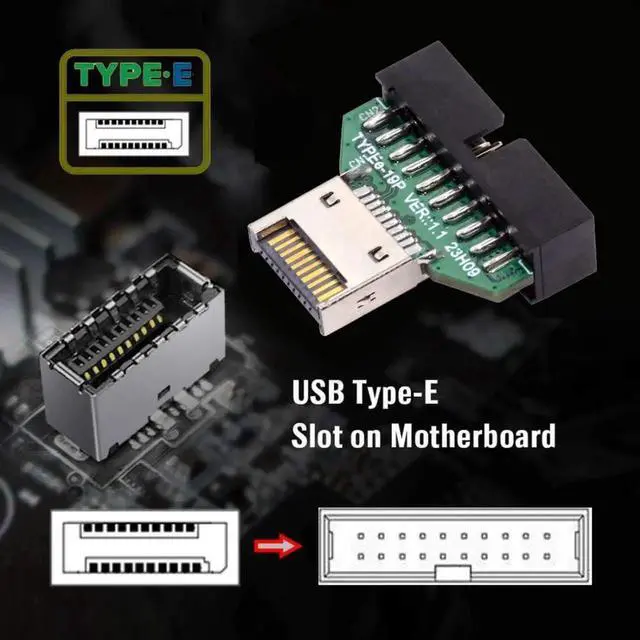
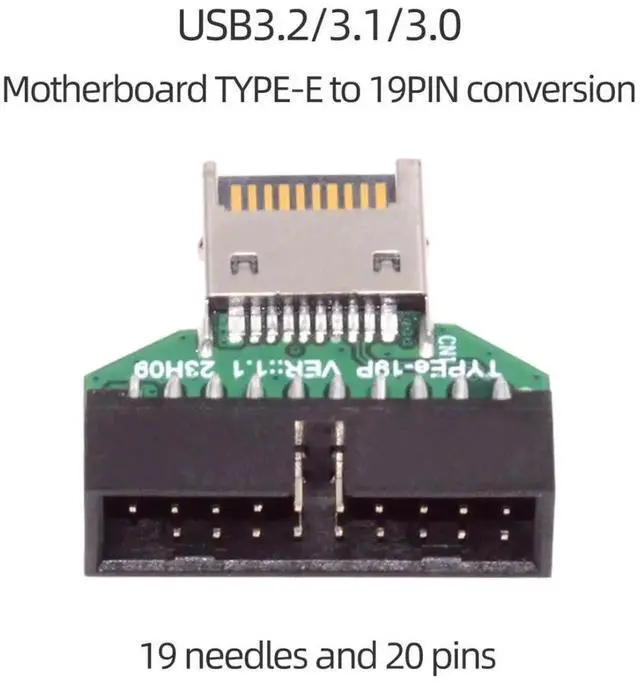
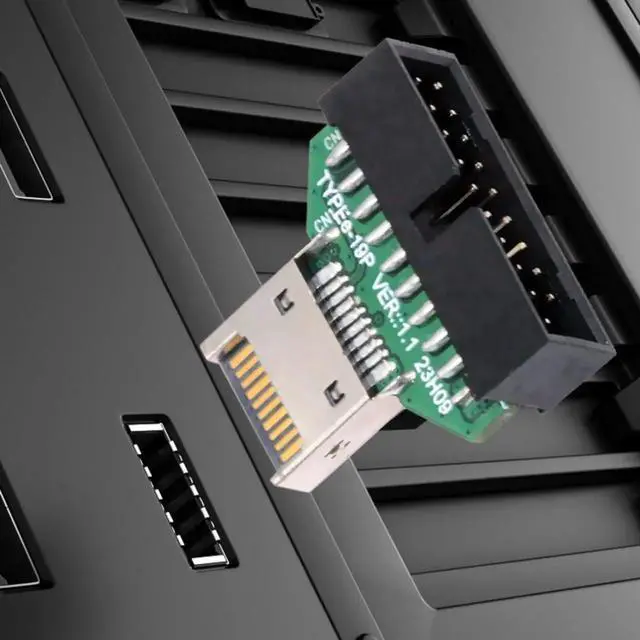
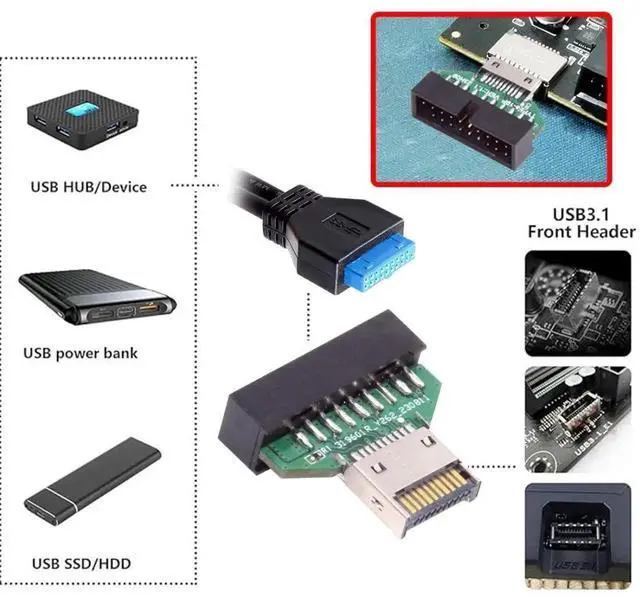
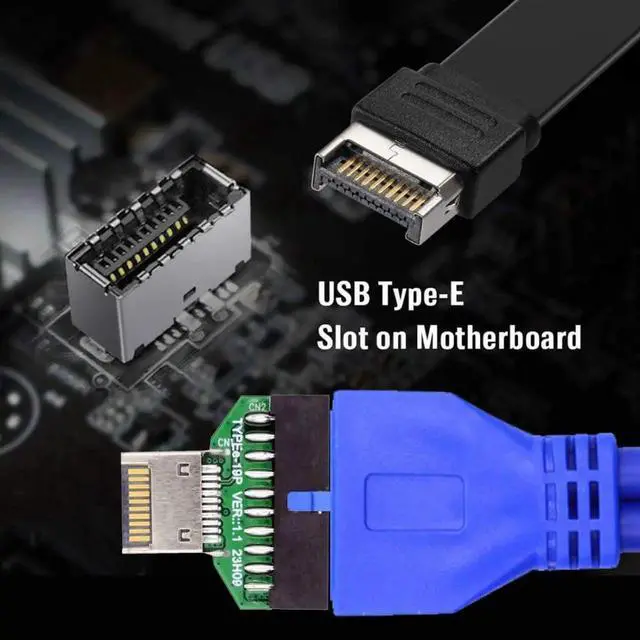
Any questions? Our AI beta will help you find out quickly.
1) Due to interface limitations, the Type-E interface is usually designed for single-channel output, which means it can only provide the output capability of a USB 3.0 interface. Therefore, it is not possible to directly convert two independent USB 3.0 interfaces through a Type-E interface.
2) The Type-E port supports 20Gbps USB Data from SSD/HDD. Doesn't support any audio,video and docking output, Not work for any PD power, DP alt mode.(The transmission speed depends on the motherboard Type-E port speed, the adapter does not change the speed)
3) When using a 19-pin to Type-C data cable, the Type-C interface can support USB3.0 or USB2.0 on the front, and only USB2.0 on the reverse.
4) When using a 19-pin to 2 Type-A port data cable, one A port only has USB3.0 function, and the other A port only has USB2.0 function.
5) When using a 19-pin to a single Type-A port data cable, it may only have USB2.0 function (no USB3.0),or it may only have USB3.0 function (no USB2.0), because each cable has different definitions, so the final USB function is different;